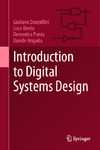| dc.description.abstract | The large and ever-growing complexity of today’s digital systems places heavy
demands on educational systems that are in charge of training the new generations
of designers or just providing a solid understanding of the digital world. Academic
institutions struggle to keep the pace of technological advancements, and people,
like the authors of this book, who are in charge of introductory- or
intermediate-level education, have the responsibility to face the problem and make
choices.
It is certainly obvious that a digital designer must be trained in the use of
hardware description languages (HDLs) and it is nowadays a common practice to
introduce them very early in the courses, substituting the traditional approach based
on components and schematics. The choice to describe digital systems by HDL
matches very well with the adoption of Field-Programmable Gate Arrays (FPGA)
for the practical implementation of projects, using prototype boards provided by
chip producers.
Nevertheless, it is our opinion that the adoption of HDL in a beginner course of
logic networks with limited resources in terms of credits (as in our case) may
present problems. We believe that it is not easy to build a solid understanding of the
foundations by completely replacing logic components and schematics with HDL,
which requires a level of abstraction and a familiarity with programming that
beginner students generally do not possess.
What is more, employing a simulation and synthesis software developed by
FPGA chip producers presents other problems. Tools developed for digital systems
designers may not necessarily satisfy learning needs: their use is not immediate for
students, who may end up using them partially and mechanically, with the risk of
missing important basic concepts, hidden under the technicalities of HDL and tools.
It is therefore necessary that students acquire a solid foundation on which to
build design abilities and, at the same time, adapt to the fast rate of technological
innovation, while gaining familiarity with languages and design tools. | en_US |

